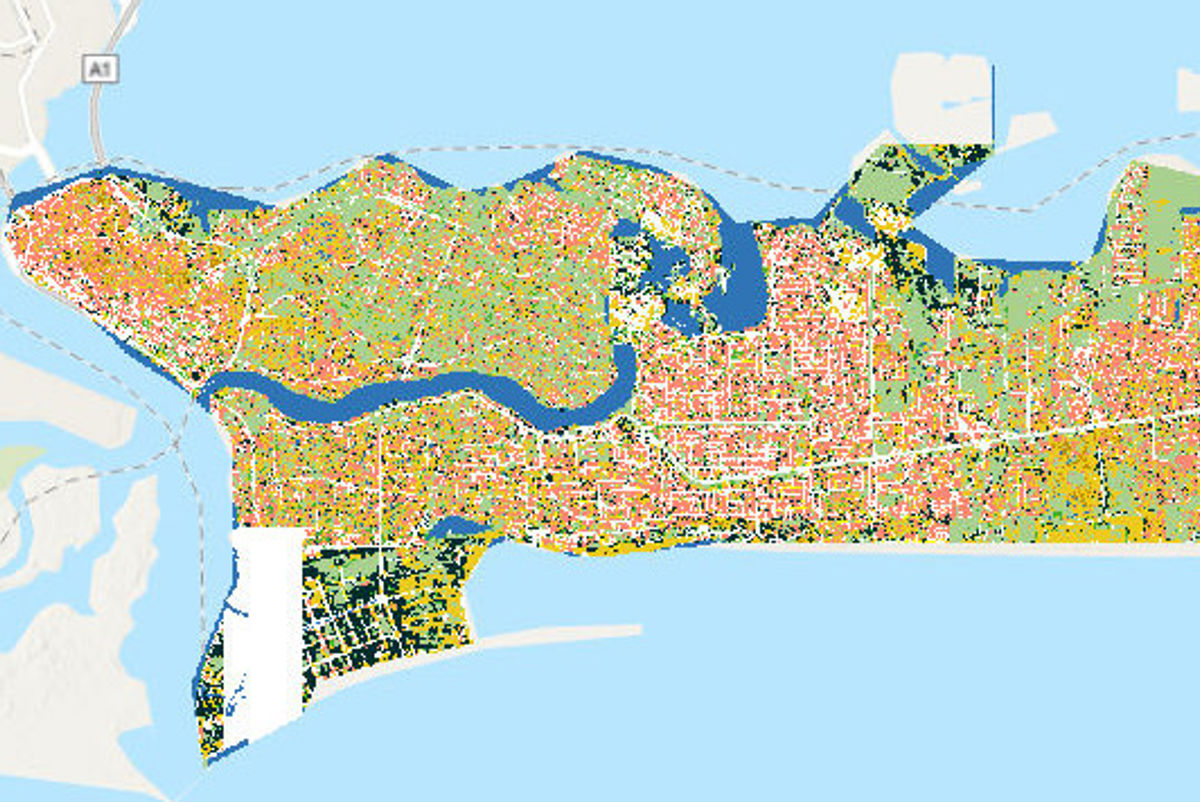Africa Sponge Cities Snapshot
Flooding now impacts more people than drought across Africa, with rapid urbanisation, combined with increasing extreme rainfall putting millions more at risk. Our snapshot is aimed at getting people talking about how cities across the continent can preserve and enhance their natural assets to increase resilience.

Rapid, unplanned urbanisation, combined with climate change is putting millions across Africa at risk of flooding.
As cities across the continent expand, they have an opportunity to harness the power of their natural assets – including precious remnants of natural habitats – to build their resilience to extreme weather events.
The first step to maximising the benefits of natural infrastructure is to understand what is already in place. We’ve used our land use analysis tool, Terrain, to better understand the “sponginess” or existing natural ability of cities around the world to absorb rainfall. Our new Africa Sponge Cities Snapshot looks at the urban centres of five cities across the continent: Cairo, Durban, Kigali, Lagos and Nairobi.
x3
Expected growth in Africa's urban population by 2050
+50
%
of many African cities' populations live in informal settlements
$6.3bn
of flood damage across Africa between 2001 and 2018
Creating the snapshot
Using Terrain, we calculated the amount of green and blue areas in the urban centres of each city. We then factored in the impact of soil types and vegetation and calculated the rainfall runoff potential. We used this to produce our sponge snapshot.

Africa sponge city profiles
This survey is not intended as a scorecard or an assessment of risk. For example, some cities may be less “spongy”, but have fewer heavy rain events to cope with. The snapshot is aimed at getting cities thinking more about nature as an asset and as infrastructure – to be retained, enhanced and deployed to help better cope with some of the greatest challenges facing us.
-
Cairo - 20% spongy
Cairo’s “sponginess rating” of 20% is primarily due to its low concentration of blue-green (permeable) surfaces – which cover 29% of the snapshot area. Almost 40% of the study area was found to be ‘buildings’, with a small proportion of green infrastructure located in small, scattered pockets including low vegetation agriculture in the west. There are only a small number of parks across the city, with the study area containing less than 5% of trees, far lower than Durban which had 31%. Its moderately-high runoff soil classification, composed of less than 50% sand and between 20-40% clay, further contributes to its overall ‘sponginess’.
-
Durban - 40% spongy
Durban’s “sponginess rating” of 40% is primarily a result of its high concentration of blue-green (permeable) surfaces – covering two thirds of the snapshot area. Relatively equal proportions of roads and buildings together comprise 40% of the overall study area. The flat, built-up eastern central business district contrasts with dense tree coverage representing almost a third of the area across the steeper inland sections to the west. The city’s moderately-high runoff soil classification, composed of less than 50% sand and between 20-40% clay, further contributed to its overall ‘sponginess’.
-
Kigali - 43% spongy
Kigali’s “sponginess rating” of 43% is primarily due to its high concentration of blue-green (permeable) surfaces – which cover 67% of the snapshot area. Characterised by rolling hills, valleys and ridges, natural vegetation represents a third of the study area, spread around the residential clusters. It had more low vegetation cover than any other urban centre studied, at almost one third. Its high runoff soil classification, composed of less than 50% sand and more than 40% clay, further contributes to its overall ‘sponginess’.
-
Lagos - 39% spongy
Lagos’s “sponginess rating” of 39% is primarily due to the high concentration of blue-green (permeable) surfaces – which cover 58% of the snapshot area. The study area contains 34% low vegetation, undeveloped marshland. Large green expanses within the central residential areas in Lagos Island contrast its densely populated western region where there is little green space. Lagos’s high runoff soil classification, composed of less than 50% sand and between 20 and 40% clay, further contributes to its overall ‘sponginess’.
-
Nairobi - 34% spongy
Nairobi’s “sponginess rating” of 34% is primarily a result of its high concentration of blue-green (permeable) surfaces – which cover just over half of the snapshot area. The city benefits from a large quantity of green infrastructure, particularly grasslands. This is driven by parkland as well as urban backyards spread across the study area. However, a high proportion of the study area also featured high-density development with almost no green space. Its high runoff soil classification, composed of less than 50% sand and more than 40% clay, further contributes to its overall ‘sponginess’.

Download
Get in touch with our team




